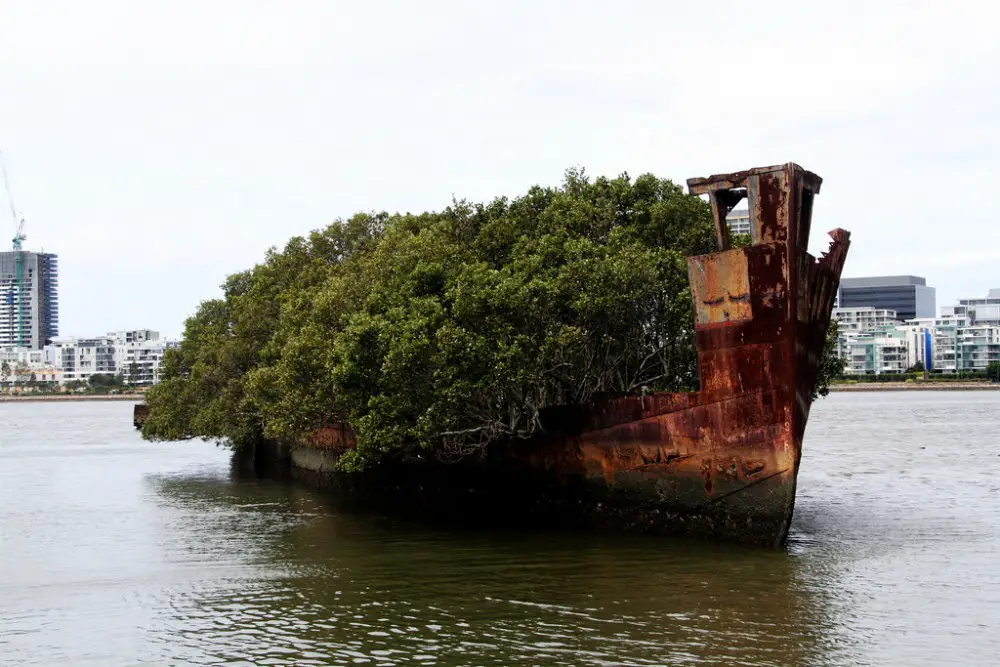While almost every day we read about deforestation, a floating forest has been "planted" in Rotterdam in the Netherlands. Project initiator Jeroen Everaert was inspired by the artwork of Jorge Bakker, a Dutch artist of Colombian origin, who imagined a post-apocalyptic life with amphibious trees and people living on rafts. Why not translate art into real life? wondered Jeroen Everaert, wanting to spruce up an ugly part of Rotterdam's harbor. Done and done!
The Floating Forest is the result of research work by several colleges and universities and collaboration between several institutions. The research was about finding the kind of tree that could survive planted in a buoy. Dutch elm was the winner. The metal buoys, which are highly resistant to storms, were donated by the Dutch environment ministry after being replaced with plastic ones. Good idea to reuse scrap iron! Elm saplings were also donated by a nursery. Each sapling has been planted in a buoy and draws its water from a 600-liter freshwater-filled reservoir at the base of the buoy, and the 'soil' is a mixture of sand and fabric to allow the sapling to be fed in a similar way to the natural one.
The water reservoirs will be refilled about 4 times a year and the forest will be able to last for 5 to 10 years. Everyone who comes to the area will enjoy nature and marvel at what people can do, becoming more aware of the need to protect the environment. Of course, the floating forest in Rotterdam is the first of many to 'grow' in other parts of the Netherlands.

And while we're on the subject of a floating forest, let's learn about another one: Homebush Bay, in Sydney, Australia, is where a 102-year-old ship was taken after serving its wartime duty. Before it was dismantled, the ship was transformed into a 'floating forest' that today attracts tourists and photographers from all over the world. The ship, which is an SS Ayrfield and weighs over 1000 tons, was built in 1911. In 1972, it was brought to Homebush Bay to be dismantled, but fate has given it another life.





































Add comment